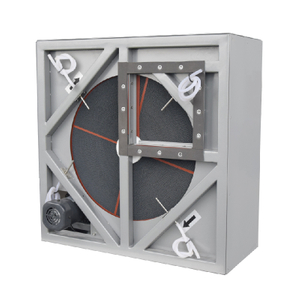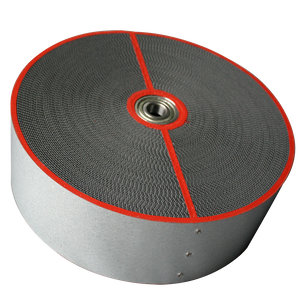What is the Effect of a Desiccant Rotary Dehumidifier?
Views: 122 Author: Site Editor Publish Time: 2021-11-11 Origin: Site
Air dehumidification can be achieved by two methods. The first one is to cool the air below the dew point and export it by cooling. The condensing dehumidifier is designed using this principle is a , which was very popular in previous years. The other type of dehumidification solution is to use desiccant material to absorb water vapor from the air, which satisfies the environmental dehumidification requirements at low temperatures. Both types of dehumidifiers offer good performance. And both types of dehumidifier performance can heat the air, desiccant dehumidifiers have better heating performance. The air will become about 5 Celsius degrees warmer when it comes out of the desiccant dehumidifier.
Because of the strong adsorption and water holding capacity, the desiccant is widely used in shipping, medicine, electronics, food, storage, and other fields. A desiccant dehumidifier is a new type of dehumidifying equipment which has been designed according to the difference of vapor pressure between desiccant substrate and humid air. This kind of dehumidifying equipment can handle sensible and latent heat loads independently without consuming a lot of electricity, which meets the current demand for energy saving and environmental protection. In addition, compared with the general electric dehumidifier, the silica gel desiccant dehumidifier is more economical because it can be used again.
The dehumidifying wheel is a rotor filled with desiccant material, which is the core component of a desiccant dehumidifier. Desiccant material has always played a vital role in the development of desiccant-assisted air treatment, especially in the dehumidification of humid air. The properties of the desiccant material can significantly affect the performance of desiccant dehumidification systems. Commonly used desiccant materials include activated carbon, activated alumina, molecular sieve, silica gel, lithium chloride, and calcium chloride, etc. The key principles for selecting suitable desiccant materials are: desiccant materials should have a large saturation adsorption capacity and be easy to reactivate.
When the desiccant rotor dehumidifier was first invented, the lithium chloride salt component was used as the core desiccant material. This component absorbed moisture through a chemical reaction. However, when the ambient humidity became high, the salt-impregnated rotor became useless because it could hardly withstand a large amount of moisture. With the development of chemical science and improved production technology, the best industrial dehumidifier desiccant component available today is the silica gel desiccant rotor.
As a proven technology, desiccant-assisted dehumidification systems have been used successfully in industrial applications for many years. As a complement to dehumidification in electric refrigeration system, dehumidification systems can help to address the challenges of the dehumidification industry module. In particular, increased national ventilation standards, the need to improve indoor air quality and better control have all contributed to these desiccant technologies and help them becoming mainstream in the dehumidification industry. Low-temperature desiccants can make effective use of waste heat from electric air conditioners and improve dehumidification efficiency. Last but not least, further research and demonstration projects will facilitate a wider application of this technology.
















